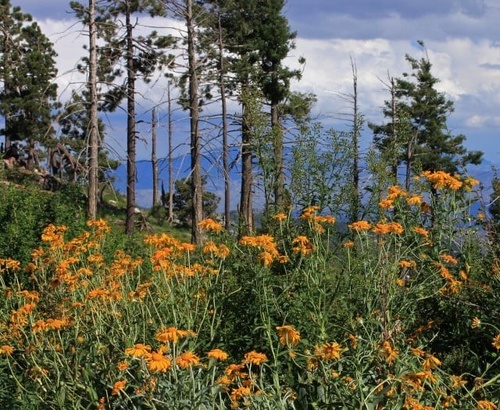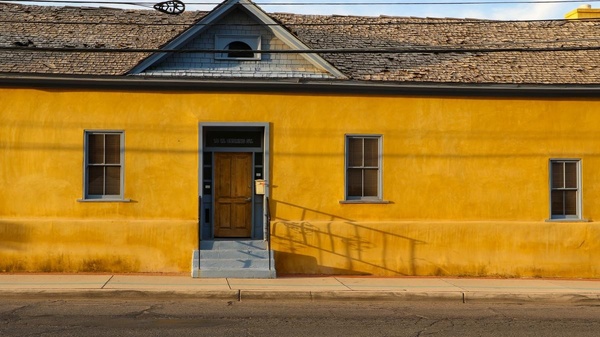Mt. Lemmon- Tucson
Mt. Lemmon, located in southern Arizona, has been accredited for being one of the highest peaks in southern Catalina sky island. The mountain has been home to a large number of people for many decades. Its woodland resources and different outdoor activities in the mountains have been a source of income for these people. Apart from such, the mountains provide relief from heat experienced from the desert floor. Judging from its physical standing and looking back at some of the images that are presented of the mountain many decades ago, there are a lot of differences between what the mountain is now as compared to what it was in the past. A lot has changed, but nonetheless, it still gives an impressive physical stature of the mountains. The people who live near the mountain, as noted, are culturally oriented, judging from the look of things. Most of the people who live here are in the mining industry, and it's understandable given the fact that one of the major mining scenes is found in Mt. Lemmon. There is also historical evidence of how the United States Air Force used the mountain during the Cold War to lodge attacks against the enemy. A lot of stories are given by especially the elderly people who are still alive or who heard such stories from their parents. The heights of the mountains gave the Air Force an advantage over the enemy. Also, the fact that the terrain of the mountain acted as a good hideout from the army. Although the mountain is no longer used for such purposes many decades later, there are traces of how the army conducted its activities from the mountain. It is an experience that is one of a kind and worthy of exploring.
An important history is associated with how the mountain was named. As the name sounds, Mt Lemmon is assumed to be named after a fruit, and questions have been raised about why the mountain was named as such in the first place, given the cultural diversity of the people found near or around the mountain. However, the truth is that the mountain was named after a botanist, Sara Plummer Lemmon, who accordingly had shown great interest in the mountain and had led a hiking guide up the mountain in the 1880s. There is much to learn about Sara Lemmon in different historical sites as their journey around the mountain has been documented. Also, important to mention is that the mountain has been a refuge for especially the residents of Pima County during the summer months when the heat is too much to bear. The mountain provides a source of refuge from such heat. There are a lot of activities that are carried out below and at the peak of the mountain. Ski and snowboarding are among the common activities that common with the mountaineers here.
My experience at Mt. Lemmon was one of a kind. I have been to other mountains before, but when I got to see Mt. Lemmon physically, the urge to learn more about the mountain, the culturally diverse people, and the serenity that comes with the woodland resources was a unique experience. I was able to ask questions from the local people, especially the elderly, who were very insightful in offering their thoughts about the mountain. Although not much is known to the outside world about the mountain, its history spans many decades. One of its history dates back to December 1941, after an attack on Pearl Harbor. Accordingly, orders were given by President Franklin Delano Roosevelt to round up Japanese Americans in the mountain. I also visited the ruins of the prison camps, a place where only rock walls and foundations remain. As I learned, the prison camp generated both good and bad memories from the locals. Built in 1937 as an honor camp, the prison with no fences or guard towers was used for federal prisoners, including tax evaders, bank robbers, and embezzlers. Many stories are told about the prisoners and the fears they generated for the residents who no longer felt safe exploring the mountain at such a time. However, the prisoners held in the camp were also instrumental in the construction of Mt. Lemmon Road starting from 1933 up to 1951. A lot has changed in terms of infrastructure since then, and as I garnered, Mt. Lemmon is a beautiful place to be.
The people there are also hospitable, although a majority of them are white. Over 80% of the mountaineers in Mt. Lemmon are whites, while 11% are Hispanic, and the rest are people drawn from different minority races (Ratte,2023). There are religious activities that the Hispanic people especially associate with the mountain. There are cultural practices, beliefs, and traditions as well that are seen to be with people at Mt. Lemmon. Although, as I was told, such seems to be fading with time, there are traces of such cultural practices, especially among the Hispanics who live across the mountain (Ratte,2023). There are also gatherings, as I witnessed religious sects gathering at the foot of the mountain to perform their rituals. There are also traces of Mexican Americans who still hold on to their Mexican culture. I spotted a house near the mountain that became of interest to me due to its construction.
As I got to engage with the owners, who I learned were originally from Mexico, I learned that their neighbors call them barrios. They love to live in brightly colored houses, and their dress is distinguishable from other people. They state that they are able to withstand the sticky heat of the summer as they have learned from their ancestors the trick of living near the mountains. As I learned from them, being near the mountain is heavenly as you get to be exposed to different kinds of people and games as people come from afar to visit the mountain during different timelines of the year. Still, there needs for more historical solid materials about Mt. Lemmon and its people, their diversity, trees, and animals on the mountain.
References
https://localwiki.org/tucson/Mt._Lemmon
Ratte, Karen. "Look to the Mountains: A History of Mt. Lemmon." SouthernArizonaGuide.com. Last modified August 2, 2023. https://southernarizonaguide.com/look-mountains-history-mt-lemmon/.






